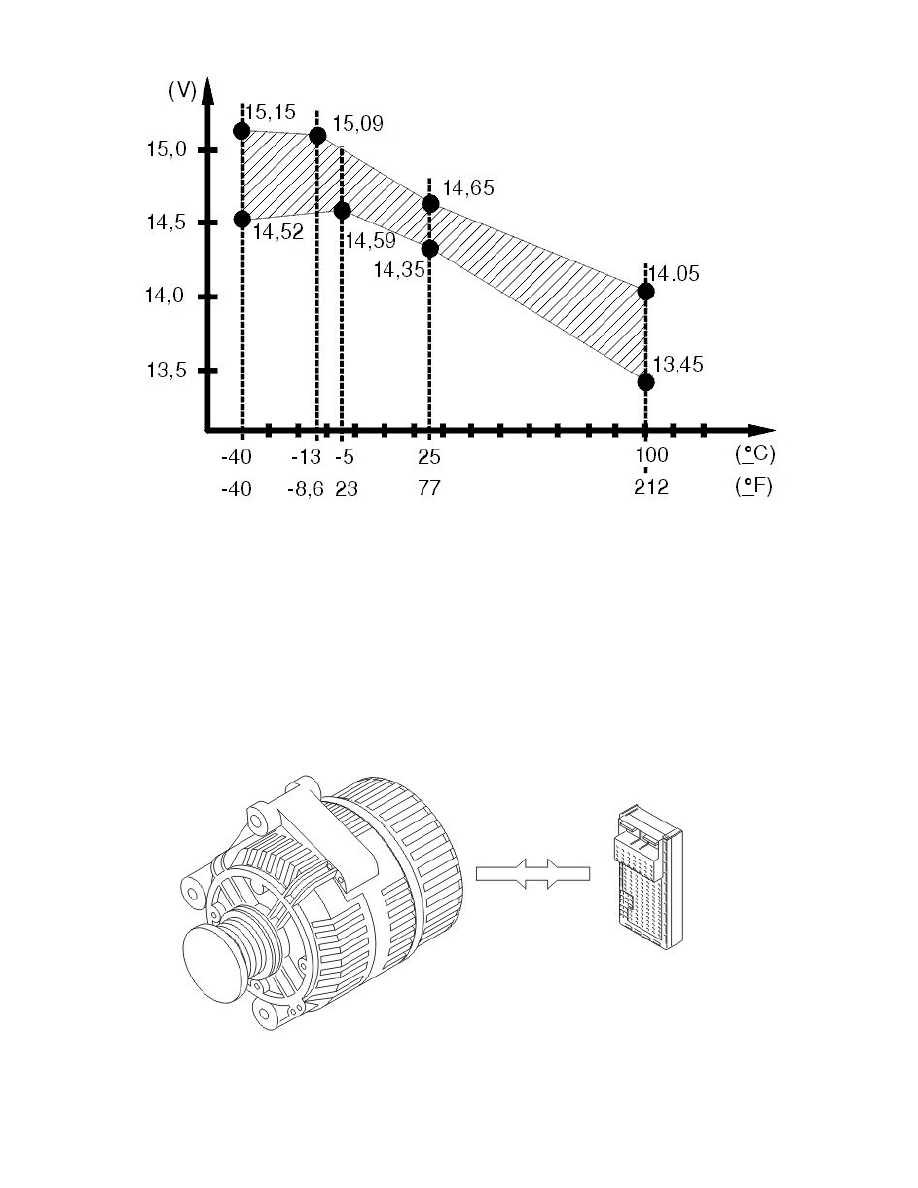S80 L6-2.9L VIN 92 B6294S2 (2004)

At room temperature a fully charged battery cell produces 2.12 V. A 12 V battery has 6 cells and therefore produces 12.72 V when the battery is fully
charged. The battery has an internal resistance which must be overcome for charging to occur. At room temperature 0.2 V per cell or 1.2 V for the entire
battery is required. 13.92 V (12.72 V+1.2 V) is required to charge a battery at room temperature. In cold weather conditions the chemical reactions are
slower and the inner resistance becomes higher. This requires a greater voltage when charging to overcome the internal resistance.
The charge regulator controls the output voltage, depending on the engine compartment temperature, following a predetermined curve, see the
illustration.
The charge regulator calculates the engine compartment temperature using integrated semi-conductor electronics. In cold conditions the charge regulator
allows a higher voltage. At higher temperatures the voltage is lowered. This ensures full battery charging regardless of the temperature. A battery must
have a greater charge voltage at lower temperature for charging to occur.
L-signal for the central electronic module (CEM)
The charge regulator is connected to the central electronic module via an L-signal.
The L-signal is used to pre-magnetize the generator rotor and to transmit signals to the central electronic module telling the central electronic module that
the generator is charging or not when the engine is running.
When the engine is starting, the generator (GEN) does not charge. When the engine speed (RPM) passes approximately 550 rpm a delay of
